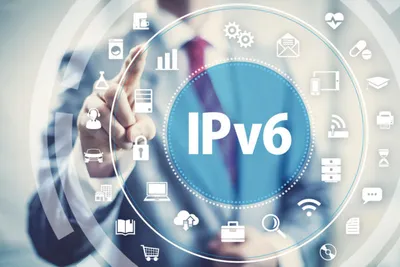
☰

We can’t wait any longer! We have some great news to share, and we believe you will be as excited as us when you hear about it.
After close to 2 years of private beta, we are ready to make our IPv6 offering public.
IPv6 is the next generation IP, the current widely used IP protocol that the Internet is based is called IPv4. IPv4 (IP version 4) is the IP address we are all used to and has a familiar format of A.B.C.D where each digit is a number between 0 and 255. For instance, 192.168.0.122 is an IPv4.
IPv6 in other hands has a whole different format:
An IPv6 address is represented as eight groups of four hexadecimal digits, each group representing 16 bits (two octets, a group sometimes also called a “hextet”). The groups are separated by colons (:). An example of an IPv6 address is: 2001:0db8:85a3:0000:0000:8a2e:0370:7334
The Internet, seems to work fine with IPv4, so why is it that we need IPv6 and more importantly why would we need that for SEO purposes?
The answer to this question comes down to the number of IPs available in each protocol. For IPv4, the pool of IPs come from its 32-bits (232) length and contains 4,294,967,296 IPv4 addresses. The IPv6 address space is 128-bits (2128) in size, containing 340,282,366,920,938,463,463,374,607,431,768,211,456 IPv6 addresses.
We are running out of IPv4 and IPv6 is going to increase the pool drastically.
Why do as SEO specialists need to have IPv6 in our arsenal?
This question is more complicated and not that well discussed before. We are going to have to explain it in more posts to come but here let’s go through some of those reasons briefly.
Google might give sites that have IPv6 address boost for searches coming from visitors that have IPv6 (In the US alone that is more than 30% of visitors)
Many of the top 10,000 sites on Alexa 1 million list are available on IPv6 (Google, youtube, Netflix and so on). There is a good chance a website to be on both IPv4 and IPv6 if the site is maintained by a big corporate. While on another hand all SPAM websites and content farms are on IPv4 only. Google AI, sees IPv6 as a quality factor.
For the above reason, Google deindexing seems to have only affected domains that are on single IPv4.
From our own experience enabling IPv6 on our backlogs and our main sites have improved our SEO ranking.
Google has enabled IPv6 on all its cloud offering. We expect that Google in coming years publically announces IPv6 as a ranking factor the same way they made a similar announcement for SSL. The websites that have been on IPv6 for a long time are going to enjoy from this ranking factor the most.
One of the most critical aspects of our SEO hosting is our attempt on hiding your networks footprint.
Considering the new format of the IP and the lack of subnets in IPv6 and the allocation size of IP to each data center, we had to come up with a new mechanism to define SEO subnets (A, B and C) in this new IP landscape.
Here is how we define different IPv6 classes:
You can read more about how we came up with the above definitions and how to differentiate between IPv6 address classes here:
You may also be interested in the press release of this offering which you may read here.